The AC Aceca Sports Car

1957 AC Aceca Image
from Classic to Modern
The AC Aceca sports car, launched in 1954, was a two seater, fixed head coupe, and based on the AC Ace.
It was designed as a hand made Grand Tourer in the old British tradition, with aluminium body panels over a steel chassis, and featured parts of the interior, such as the dashboard, door frames, and tailgate, decked in ash wood.
A distinctive characteristic was the hatchback at the rear and, at that time, the Aceca was the only car to incorporate this feature, apart from the 1953 Aston Martin DB2/4.
It has been suggested that the body styling of the front section of both the Ace and Aceca bore a striking resemblance to part of a design for AC suggested by the famous Pininfarina in the late 1940's.
Its lightweight structure was down to its steel tubular frame, aluminium engine block, and body panels also made of aluminium. The Aceca featured:
- Independent suspension at the front and leaf spring at the rear
- Worm gear steering replaced rack and pinion
- Curved windscreen
- Bucket seats covered in leather
- All round hydraulic brakes
- Front wheel disc brakes from 1957 onwards
- Overdrive on the top three gears was an optional extra
Fitted with a Moss four speed gearbox, early models were powered by AC's own straight 6-cylinder, 2 litre, overhead cam engine, developing 100 bhp, and with a top speed of 108 mph.
However, in 1956 Bristol Cars, who specialised in building hand made luxury cars, offered its straight 6-cylinder, 2 litre engine, fitted with three SU carburettors, as an alternative unit.
This car was designated the AC Bristol, and developed 130 bhp, with a top speed of 118 mph, and a 0-60 mph time of 8.2 secs.
Technical Data Aceca Aceca Aceca
Production
1954-1955 1956-1963 1961-1963
Engine, cc 1991 1971 2553
Cylinders, bhp 6,
100 6, 130 6, 170
Top Speed mph 108 118 130
0-60 mph, secs 9.1 8.2 8.1
Torque ft/lbs 120 128 154
0-100 mph, secs - 34 -

1957 AC Aceca Image

AC Aceca Image
Full Screen Full Screen
The Aceca Bristol sports car, as it was now called, was also available with a lesser tuned, Bristol B-Type engine, which developed 105 bhp.
It had a near perfect fore/aft weight distribution which helped to produce exceptional handling, especially on loose surfaces and dirt tracks, which made it popular in historic racing circles.
Due to its stiff suspension, the ride was inclined to be hard, and there was a tendency to oversteer, although handling was still regarded as solid and predictable.
Furthermore, some customers made adverse comments concerning the heating system, which was inadequate in colder climates, and that soundproofing, when driven above 75 mph, was ineffective.
In 1961, AC discontinued its own straight, 6-cylinder engine, which had been designed by John Weller, the company's founder, in 1919.
Between 1961 and 1963, an Aceca variant was offered powered by a Ruddspeed tuned 2.5 litre, 6-cylinder, Ford Zephyr saloon engine, which developed 170 bhp, produced a top speed of 130 mph, and a 0-60 mph time of 8.1 secs.
In order to cope with the additional weight of the Ford engine, the front suspension was strengthened.
One of the advantages of the Zephyr engine was that it was inexpensive to service.
This Aceca variant displayed some subtle body styling changes, such as a lowered bonnet line, and the front section being more oval in shape and slanted forward.
However, designated the Aceca 2.6 sports car, only 8 of these units were ever built.
Although the Aceca was marginally heavier than the Ace, its top speed was greater owing to the fact that its lines were more aerodynamic.
Production ended in 1963, with 151 Acecas and 169 Aceca Bristols having been built, when all AC production was centred on the AC Cobra.
SPORTS CARS FOR SALE
A 1954-63 AC Aceca in beautiful condition would command in the region of £120,000/$190,000.
.
see All My Reviews
Got an interesting Sports Car story to tell?











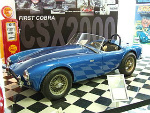
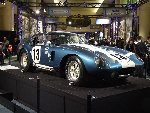


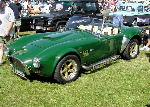

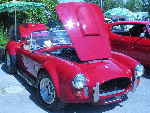


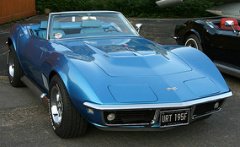


New! Comments
Have your say about what you just read! Leave me a comment in the box below.